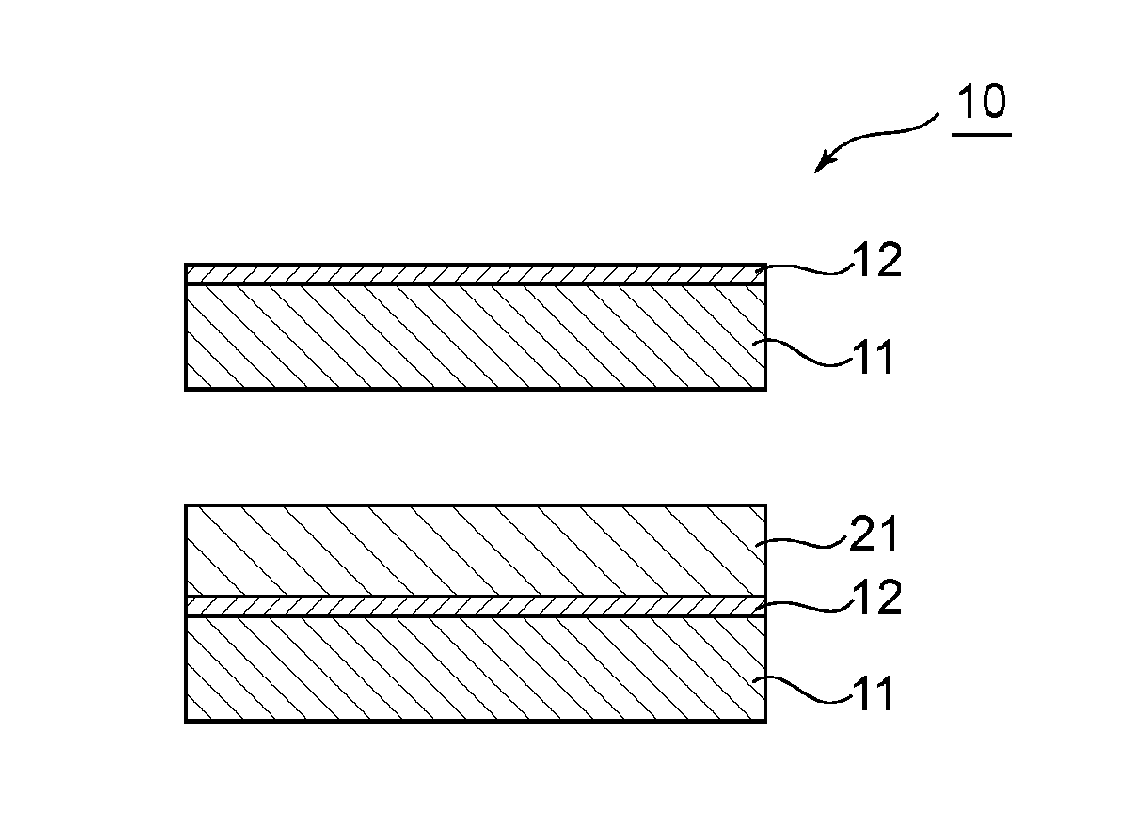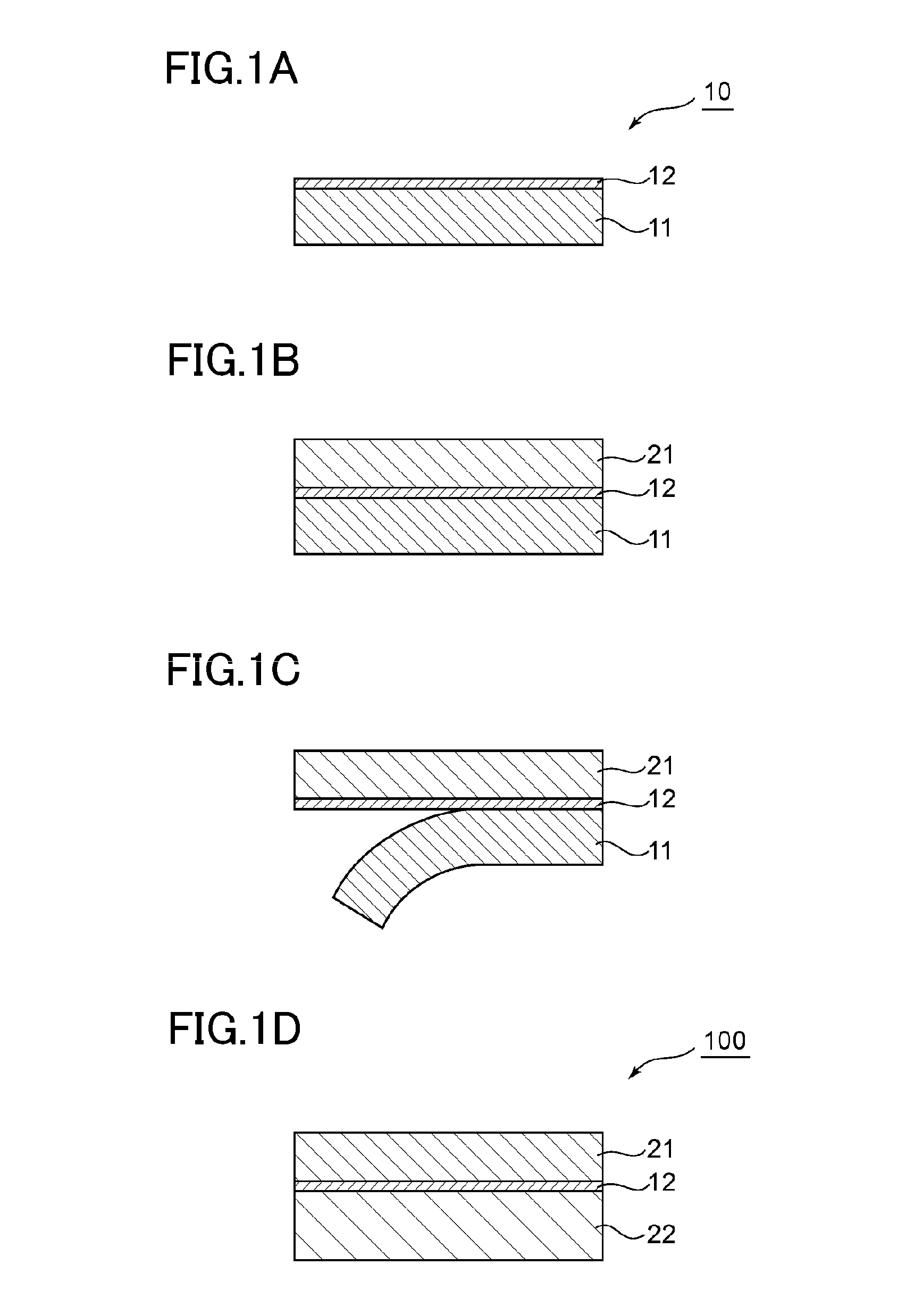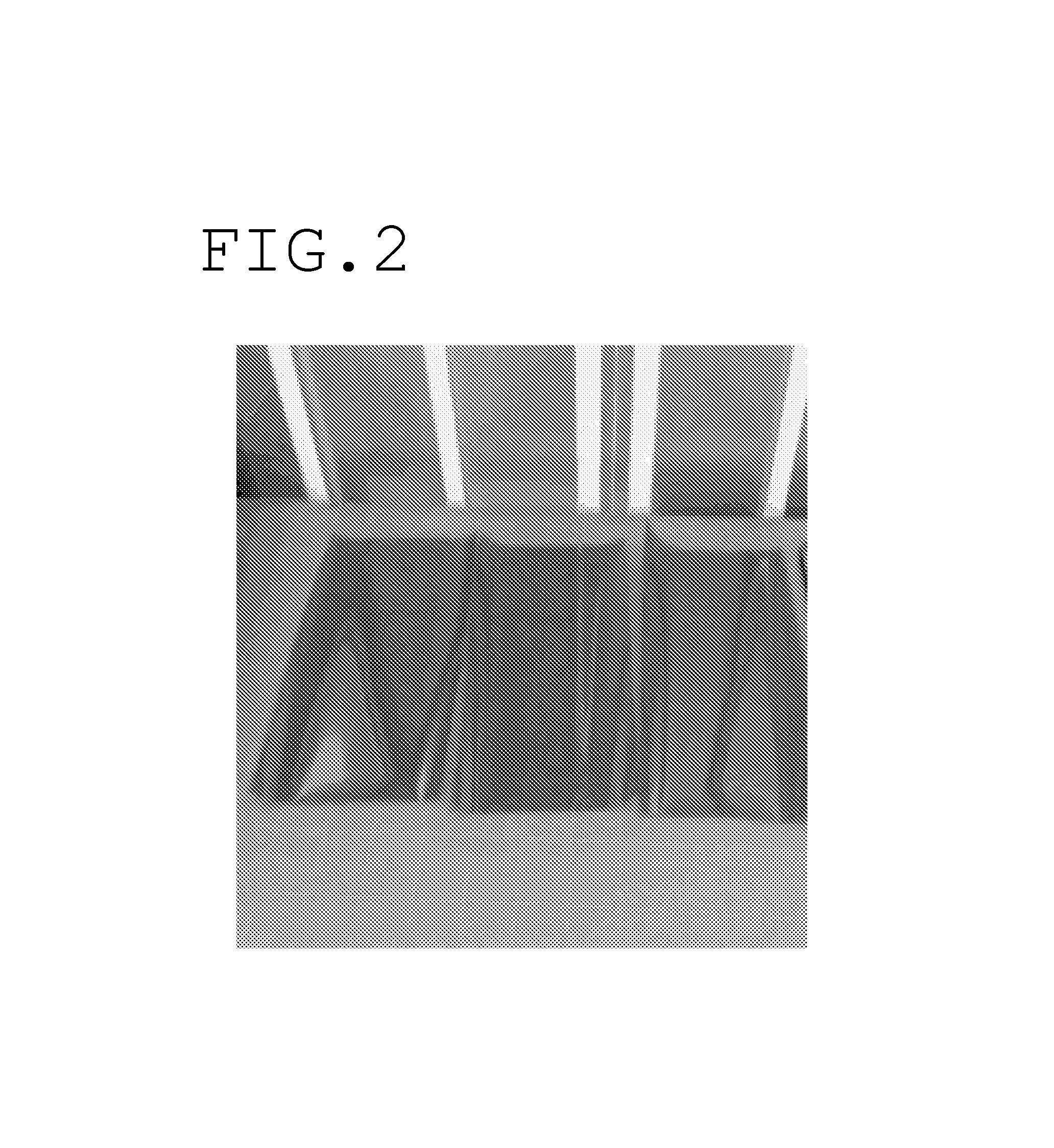Method of producing optical film laminate
- Summary
- Abstract
- Description
- Claims
- Application Information
AI Technical Summary
Benefits of technology
Problems solved by technology
Method used
Image
Examples
example 1
[0085]An amorphous polyethylene terephthalate (A-PET) film (manufactured by Mitsubishi Chemical Corporation, trade name “NOVACLEAR SH046,” thickness: 200 μm) was used as a resin substrate. The surface of the resin substrate was subjected to a corona treatment (58 W / m2 / min).
[0086]Meanwhile, a PVA (polymerization degree: 4,200, saponification degree: 99.2%) to which 1 wt % of an acetoacetyl-modified PVA (manufactured by The Nippon Synthetic Chemical Industry Co., Ltd., trade name “GOHSEFIMER Z200,” polymerization degree: 1,200, saponification degree: 99.0% or more, acetoacetyl modification degree: 4.6%) had been added was prepared and applied to the corona-treated surface of the resin substrate so that its thickness after drying became 12 μm, followed by drying with hot air in an atmosphere at 60° C. for 10 minutes. Thus, a laminate in which a PVA-based resin layer was formed on the resin substrate was produced.
[0087]The resultant laminate was subjected to free-end uniaxial stretching...
example 2
[0096]An optical film laminate was produced in the same manner as in Example 1 except that the thickness of the first protective film (cycloolefin-based film) was changed to 18 μm, its linear expansion coefficient in the feed direction was changed to 80×10−6 / K, and its linear expansion coefficient in the direction perpendicular to the feed direction was changed to 36×10−6 / K. The state of the curling of the resultant optical film laminate was visually observed in the same manner as in Example 1. FIG. 3 shows the state of the curling. The optical film laminate was convex toward the first protective film side, though some degree of curling occurred in the laminate. As a result, when the optical film laminate was attached to a liquid crystal cell while the first protective film was placed on the liquid crystal cell side, the laminate was able to be satisfactorily attached to the liquid crystal cell without the occurrence of inconveniences such as air bubbles and wrinkles.
PUM
| Property | Measurement | Unit |
|---|---|---|
| Expansion enthalpy | aaaaa | aaaaa |
Abstract
Description
Claims
Application Information
 Login to View More
Login to View More - R&D
- Intellectual Property
- Life Sciences
- Materials
- Tech Scout
- Unparalleled Data Quality
- Higher Quality Content
- 60% Fewer Hallucinations
Browse by: Latest US Patents, China's latest patents, Technical Efficacy Thesaurus, Application Domain, Technology Topic, Popular Technical Reports.
© 2025 PatSnap. All rights reserved.Legal|Privacy policy|Modern Slavery Act Transparency Statement|Sitemap|About US| Contact US: help@patsnap.com



